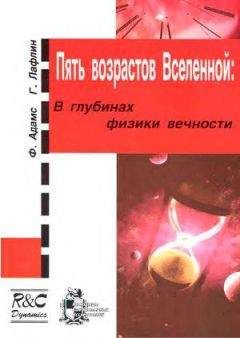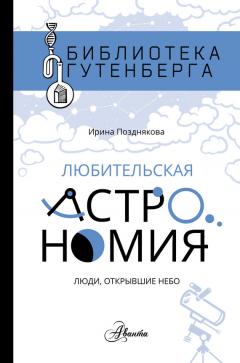Page D.N. and M.R. McKee, 1981b. Eternity matters, Nature 291, 44.
Pais A., 1986, Inward Bound (Oxford: Oxford Univ. Press).
Particle Data Group, 1998, Particle physics booklet, European Phys. J. C3, 1.
Peebles P.J.E., 1993, Principles of Physical Cosmology (Princeton: Princeton Univ. Press).
Peebles P.J.E., 1994, Orbits of nearby galaxies, Astrophys. J. 429, 43.
Penzias A.A. and R.W. Wilson, 1965, A measurement of excess antenna temperature at 4080 Mc/s, Astrophys. J. 142, 419.
Perkins D., 1984, Proton decay experiments, Ann. Rev. Nucl. Part. Sci. 34, 1.
Poundstone W., 1985, The Recursive Universe (New York: Morrow).
Press W.H. and D.N. Spergel, 1985, Capture by the Sun of a galactic population of weakly interacting massive particles, Astrophys. J. 296, 679.
Primack J.R. and M.Sher, 1980, Photon mass at low temperature, Nature 288, 680.
Rajaraman R., 1987, Solitons and Instantons (Amsterdam: North-Holland).
Rana N.C., 1991, Chemical evolution of the galaxy, Ann. Rev Astron. Astrophys. 29, 129.
Rees M.J., 1969, The collapse of the universe: An eschatological study, Observatory 89, 193.
Rees M.J., 1981, Our universe and others, Quart. J. R. Astron. Soc. 22, 109.
Rees M.J., 1984, Black hole models for active galactic nuclei, Ann. Rev. Astron. Astrophys. 22, 471.
Rees M.J., 1997, Before the Beginning: Our Universe and Others (Reading, MA: Addison-Wesley).
Riess A.G., W.H. Press and R.P. Kirshner, 1995, Determining the motion of the local group using type la supernova light curve shapes, Astrophys. J. Lett. 438, L17.
Russo J.G., L. Susskind and L. Thorlacius, 1992, End point of Hawking radiation, Phys. Rev. D 46, 3444.
Sackmann I.-J., A.I. Boothroyd and K.E. Kraemer, 1993, Our Sun III: Present and future, Astrophys. J. 418, 457.
Sakharov A.D., 1967, Violation of CP invariance, С asymmetry and baryon asymmetry of the universe, JETP Letters 5, 24.
Salpeter E.E., 1955, The luminosity function and stellar evolution, Astrophys. J. 121, 161.
Salpeter E.E. and H.M. van Horn, 1969, Nuclear reaction rates in high densities, Astrophys. J. 155, 183.
Sato K., H. Kodama, M. Sasaki and K. Maeda, 1982, Multiproduction of universes by first order phase transition of a vacuum, Phys. Lett. 108 B, 103.
Scalo J.M., 1986, The stellar initial mass function, Fund. Cos. Phys. 11, 1.
Schopf J., 1992, editor, Major Events in the History of Life (Boston: Jones and Bartlett).
Schuster J., et al., 1993, Cosmic background radiation anisotropy at degree scales: Further results from the South Pole, Astrophys. I. Lett. 412, L47.
Shapiro S.L. and S.A. Teukolsky, 1983, Black Holes, White Dwarfs, and Neutron Stars: The Physics of Compact Objects (New York: Wiley).
Sher M., 1989, Electroweak Higgs potentials and vacuum stability, Physics Reports 179, 273.
Shu F.H., 1982, The Physical Universe (Mill Valley, CA: University Science Books).
Shu F.H., F.C. Adams and S. Lizano, 1987, Star formation in molecular clouds: Observation and theory, Ann. Rev. Astron. Astrophys. 25, 23.
Smolin L., 1997, Life of the Cosmos (New York: Oxford Univ. Press).
Smoot G., et al., 1992, Structure in the СОВЕ differential microwave radiometer first-year maps, Astrophys. J. Lett. 396, LI.
Spooner N.J.C., 1997, editor, The Identification of Dark Matter (London: World Scientific).
Steinhardt P.J. and M. S. Turner, 1984, A prescription for successful new inflation, Phys. Rev. D 29, 2162.
Stevenson D.J., 1991, The search for brown dwarfs, Ann. Rev. Astron. Astrophys. 29, 163.
Suzuki M., 1988, Slightly massive photon, Phys. Rev. D 38, 1544.
Thorne К.S., R.H. Price and D.A. MacDonald, 1986, Black Holes: The Membrane Paradigm (New Haven: Yale Univ. Press).
Thorne K.S., 1994, Black Holes and Time Warps: Einstein's Outrageous Legacy (New York: Norton).
Timmes F.X., 1996, unpublished calculations.
Tinney C.G., 1995, editor, The Bottom of the Main Sequence and Beyond (Berlin: Springer).
Tipler F.J., 1992, The ultimate fate of life in universes which undergo inflation, Phys. Lett. 286 B, 36.
Tolman R.C., 1934, Relativity, Thermodynamics, and Cosmology (Oxford: Clarendon Press).
Turner M.S., 1983, The end may be hastened by magnetic monopoles, Nature 306, 161.
Turner M.S. and F. Wilczek, 1982, Is our vacuum metastable? Nature 298, 633.
Turok N., 1997, editor, Critical Dialogues in Cosmology (Singapore: World Scientific).
Vilenkin A., 1983, Birth of inflationary universes, Phys. Rev. D 27, 2848.
Visser M., 1995, Lorentzian Wormholes: From Einstein to Hawking (Woodbury, NY: AIP Press).
Voloshin M.В., I.Yu. Kobzarev and L.B. Okun, 1975, Bubbles in metastable vacuum, Sov. J. Nucl. Phys. 20, 644.
Wagoner R., 1973, Big bang nucleosynthesis revisited, Astrophys. J. 179, 343.
Wald R.M., 1984, General Relativity (Chicago: Univ. Chicago Press).
Wald R.M., 1994, Quantum Field Theory in Curved Spacetime and Black Hole Thermodynamics (Chicago: Univ. Chicago Press).
Walker T.P., G.Steigman, D.N. Schramm, K.A. Olive and H.-S.Kang, 1991, Primordial nucleosynthesis redux, Astrophys. J. 376, 51.
Weinberg M.D., 1989, Self-gravitating response of a spherical galaxy to sinking satellites, Mon. Not. R. Astron. Soc. 239, 549.
Weinberg S., 1972, Gravitation and Cosmology (New York: Wiley).
Weinberg S., 1977, The First Three Minutes (New York: Basic).
Weinberg S., 1978, A new light boson? Phys. Rev. Lett. 40, 223.
Weinberg S., 1980, Varieties of baryon and lepton nonconservation, Phys. Rev. D 22, 1694.
Weinberg S., 1989, The cosmological constant problem, Rev. Mod. Phys. 61, 1
Weinberg S., 1995, Quantum Theory of Fields (Cambridge: Cambridge Univ. Press).
Wilczek F. and A. Zee, 1979, Conservation or violation of B-L in proton decay, Phys. Lett. 88 B, 311.
Wood M.A., 1992, Constraints on the age and evolution of the galaxy from the white dwarf luminosity function, Astrophys. J. 386, 539.
Wright E.L., et al., 1992, Interpretation of the cosmic microwave background radiation anisotropy detected by the СОВЕ differential microwave radiometer, Astrophys. J. Lett. 396, L13.
Zel'dovich Ya.В., 1976, A new type of radioactive decay: Gravitational annihilation of baryons, Phys. Lett. 59 A, 254.
Zuckerman B. and M.A. Malkan, 1996, editors, The Origin and Evolution of the Universe (Sudbury, MA: Jones and Bartlett).
Ключевые события в биографии Вселенной
О вращениях небесных сфер (лат.). — Прим. перев.
В русской научной литературе чаще употребляется термин «реликтовое излучение». — Прим. перев.
Исследователь космического фона (англ). — Прим. перев.
Под обычным понимается гелий-4, т. к. именно он почти полностью преобладает во Вселенной. — Прим. перев.
Имеется в виду шкала Фаренгейта около 21 градуса Цельсия — Прим. перев.
Сочетание противоположных по значению слов. — Прим. перев.
От английского initial mass function. — Прим. перев.




